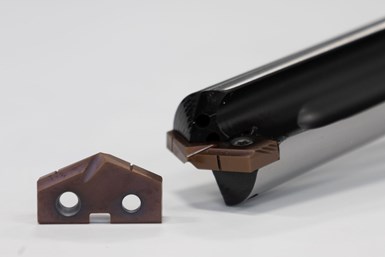Allied Machine Drill System Provides Enhanced Chip Evacuation
Eastec 2023: The T-A Pro drill body incorporates straight flutes designed for optimized coolant flow and rigidity.
Share






Hwacheon Machinery America, Inc.
Featured Content
View More

Allied Machine and Engineering, a leading manufacturer of holemaking and finishing cutting tools for the metal-cutting industry, is showcasing the T-A Pro at Eastec 2023 in booth 5453. The T-A Pro drilling system is said to provide extended tool life, consistently create quality holes and deliver superior chip evacuation even in the toughest applications.
The T-A Pro drill body incorporates straight flutes designed for maximum coolant flow and excellent rigidity while the material-specific insert geometries produce optimal chip formation. These insert geometries include steel (P) with AM300 coating; cast iron (K) with TiAIN coating; nonferrous (N) with TiCN coating; stainless steel (M) with AM460 coating; and high-speed steel substrate (X) with AM200 coating.
Adding to the material-specific inserts available for the T-A Pro, Allied most recently launched the new M geometry insert with AM460 coating, which targets stainless steel and heat-resistant super alloy (HRSA) materials. With the release of the M geometry and its proprietary margin design, Allied is able to provide a tool that reportedly offers low cutting forces, excellent penetration rates and long tool life in challenging stainless and HRSA materials. The new insert geometry features newly designed T-A Pro holders, but is also compatible with T-A holders.
Related Content
-
Orthopedic Event Discusses Manufacturing Strategies
At the seminar, representatives from multiple companies discussed strategies for making orthopedic devices accurately and efficiently.
-
Selecting a Thread Mill That Matches Your Needs
Threading tools with the flexibility to thread a broad variety of holes provide the agility many shops need to stay competitive. They may be the only solution for many difficult materials.
-
How to Troubleshoot Issues With Tool Life
Diagnosing when a tool is failing is important because it sets an expectation and a benchmark for improvements. Finding out why gives us a clue for how to fix it.

































.png;maxWidth=300;quality=90)



